© 2025 ALLCITY Network Inc.
All rights reserved.

The Denver Broncos 2017 NFL season is at a crossroads, and it’s hard to argue that the time for change has come. With a stretch that includes taking on the red-hot Philadelphia Eagles and New England Patriots, scoring points is imperative.
That starts with the quarterback, where Trevor Siemian’s inconsistencies and turnovers have put the Broncos behind the eight ball, and No.13 on the bench. New starter Brock Osweiler could bring more consistency and help avoid turnovers, but he won’t change the offense much unless he’s able to speed up his decisions and pull the trigger deep with more regularity.
If Denver wanted to truly to switch things up, they’d need to eventually turn to Paxton Lynch, who’s now back to practicing. A switch to Lynch isn’t the only solution to really mix things up offensively, but the true ace in the hole is doing what some of the best offenses in the NFL have done with much success thus far this season; adopt the spread. That’s where Lynch (and Chad Kelly for that matter if he’s your pick as the quarterback of the future) is at his best, and teams like the Kansas City Chiefs and Houston Texans are writing the book on how to adopt spread and read-option concepts giving opposing defenses headaches in the process.
We dug deep to see what’s working in places like K.C. and Houston, and how the Broncos can adopt those concepts. Remember, offensive coordinator Mike McCoy is known for his ability to be a chameleon play caller going from Tim Tebow to Peyton Manning. If Denver wants to switch things too to drastically flip the script on this season, McCoy will have to adopt major changes once again. Here’s what could work.
RPO’s and read-option looks
Paxton Lynch stands 6-foot-7 and weighs 244-pounds, he possesses the athleticism of a tight end, and he’s already shown in the NFL that he has to be respected as a runner, who can also sling it on the move. Not to mention Lynch can launch bombs off of awkward footing making him a threat in space regardless.
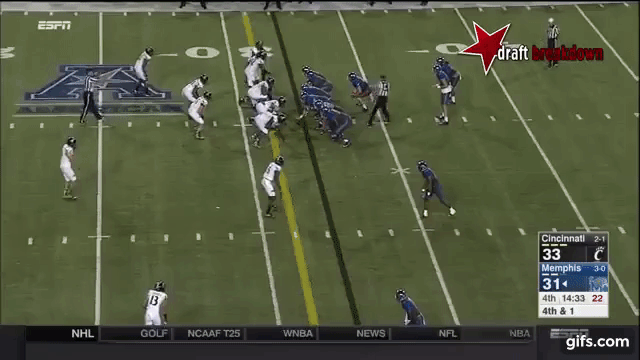
That’s where the read-option comes in, which has made both the Texans and Chiefs even more dangerous. The read-option, in this case, functions as a play-action fake in which the back could actually run, and the quarterback has to be respected as a runner as well. With all that going on, read option looks can be particularly successful in how they stress a defense and can freeze defenders in coverage who don’t know if they’re going downhill to stop the run or dropping into coverage (see below). With the big arms that players like Lynch or even Kelly have, any hesitation from a deep safety can be lethal, resulting in big plays. That’s partially how some of the best teams in the NFL are torching opposing teams.
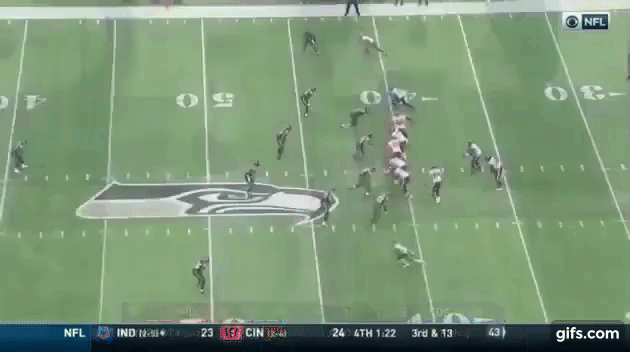
With Lynch’s arm talent combined with Emmanuel Sanders and Demaryius Thomas’ ability to stretch the field, this is a wrinkle that could add some much needed big-play ability in Denver. That would also stretch teams vertically, pushing safeties farther out of the box and allow Denver’s run game – which has shown promise – more room to operate.
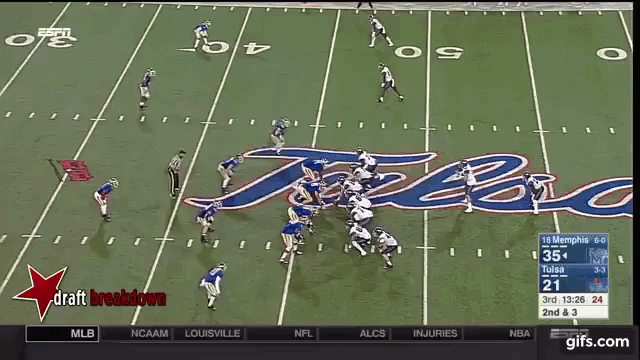
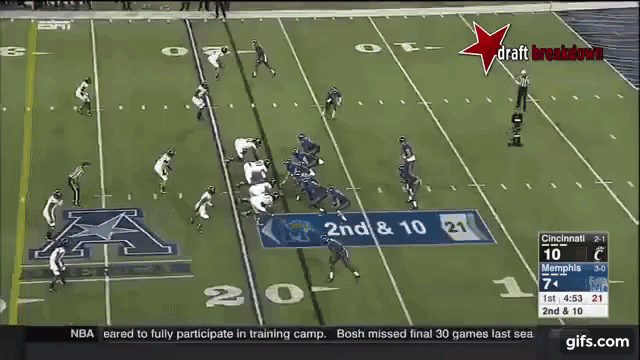
It doesn’t just end there, as there’s an added look with read-pass-options (or RPOs) that are rare to see in the NFL but can be dangerous when thrown into the mix to keep defenses honest. The Chiefs did this to the Broncos on Monday Night for a nice 15 yard gain. It almost works as a screen to the outside with the added option of the quarterback run or pitch to the running back. It’s not a complex high-level NFL offense, it’s easy to operate, but if you have the athletes and catch teams off balance doing so, good things can occur.
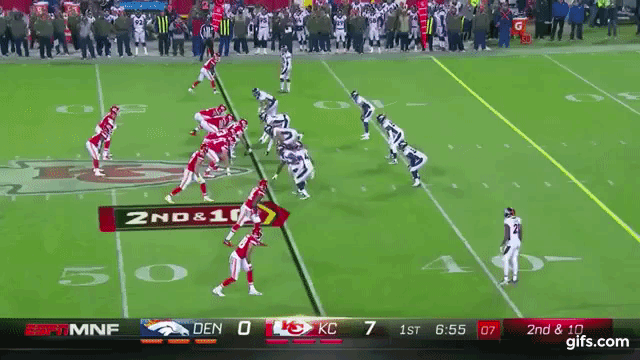
That’s not all, either, as we saw Houston, especially, adopt concepts like the triple option before DeShaun Watson went down. The kind of stuff that you’re more likely to see at the Air Force Academy than in the NFL. The thing is, they made it work with great success.
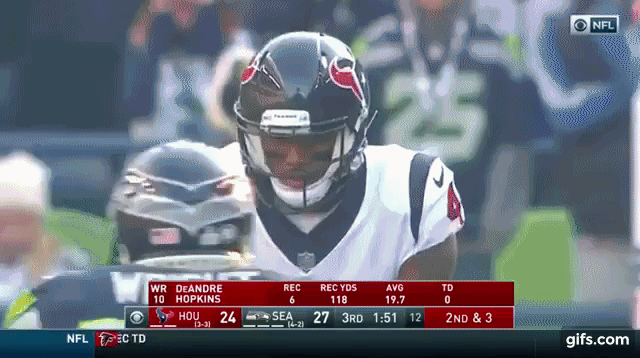
The Texans weren’t just running out of those formations, they were then passing when teams were least expecting it for big plays. All this allowed a rookie, DeShaun Watson, and a product of a collegiate spread offense (like Lynch and Kelly) to have enormous success.
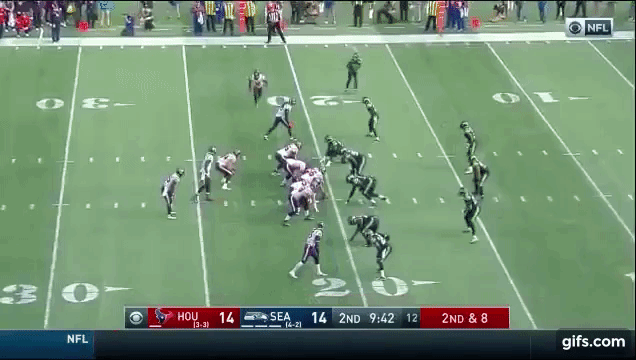
The final advantage of using more of the various option concepts presented here is for the o-line, the Broncos glaring issue offensively the past several seasons. Aside from the hesitation that this causes for defensive fronts, forcing them to stay more disciplined and not attack downhill immediately, at the risk of having a run blow by them, the advantage of these plays for the line is their simplicity. All the big uglies have to do is run block, which is exactly what they do best. It simplifies things for all parties involved and adds endless wrinkles for a defense to account for if you mix all these different formations and looks. More importantly, there’s no concern with the quarterback not being comfortable with the playbook or verbiage, everything’s easier and simplified.
It doesn’t all have to be option football either as, Lynch, has all the skills to produce out of play action bootlegs from under center, packages that can be particularly valuable in the red zone.
Side note: if fully healthy, even with Brock as the starter, some Lynch packages in the red zone would make sense regardless, simply to keep defenses on their toes and mitigate some of the issues Denver’s had this season. The San Francisco 49ers did this a few years back when they had Alex Smith starting and then would bring in Colin Kaepernick in similar packages. If trying to mix it up is the goal, that’s another possibility.
Spreading them out from the gun
The NFL’s become a spread offense, shotgun league in the last decade, that’s nothing new, but when you add that to everything else, this offense should be harder to defend.
One way of doing this is by taking a page out of the Chiefs book and using tons of pre-snap motions, if nothing else, you’re giving the quarterback an easy way to read the defense pre-snap. It’s also a way to get creative with receiving tight ends A.J. Derby and Jeff Heueurman, or speedster Isaiah McKenzie, who hasn’t done much this year, but if they’re isolated in favorable matchups can be assets.
Another thing that using more spread looks should bring is the return of the screen game, something we thought would be prominently featured in McCoy’s offense coming into the season but has been fairly absent. If DeAndre Hopkins is having success in these types of plays for the Texans, then so can Thomas or Sanders. It’s just a matter of giving them the opportunities in the right looks. It’s also a way to get your offense in a rhythm with what should be low stress throws.
Andy Reid and Bill O’Brien have been able to adapt and transform their offenses thanks to these types of concepts. It doesn’t end at those two teams either as the Eagles and Dallas Cowboys have adopted many of these concepts to exploit their young quarterback’s talents. Heck, look at a list of the league’s best offenses and most if not all are incorporating many of these types of plays.
If you want the Broncos offense to be exciting and explosive again, keeping teams on their heels and giving the Denver ‘D’ a chance this is what you should be hoping for.
Of course, the scheme can only go so far, and if you don’t execute or make plays, there’s nowhere to go. Make no mistake, the Broncos have the talent at receiver, running back, and even quarterback to make many of the concepts that are revolutionizing modern offensive football their own. Not just for the remainder of 2017 but for 2018 and beyond, some new-age thinking is required. If you’re ready to turn the page and go forward into the future, a heavy dose of collegiate style offense might just be the answer.
Comments
Share your thoughts
Join the conversation



